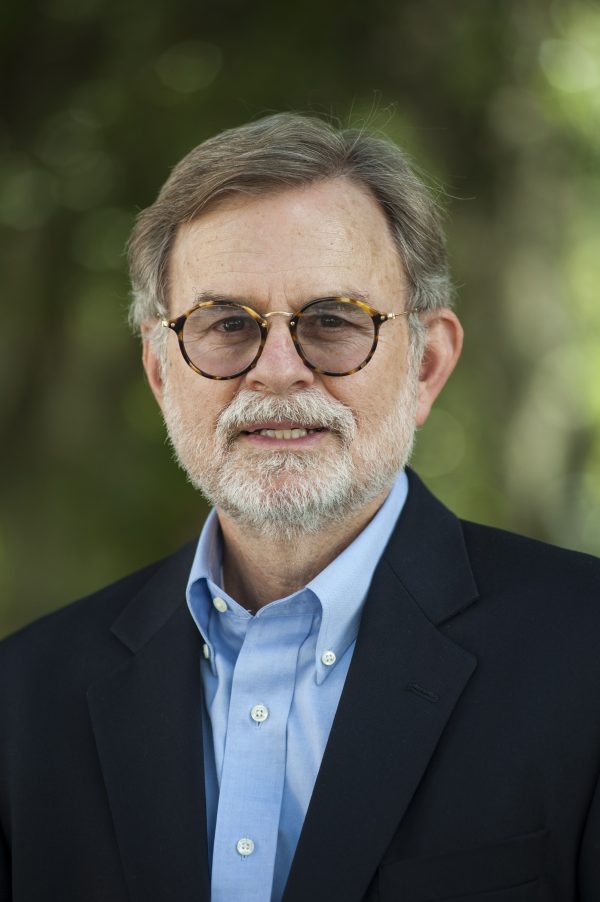A Florida Museum of Natural History curator has been selected to serve as president-elect of the Paleontological Society, the largest professional organization devoted to advancing the study of fossil animals and plants.

Florida Museum photo by Jeff Gage
Bruce MacFadden, distinguished University of Florida professor and Florida Museum curator of vertebrate paleontology, will take office Sept. 25 during the society’s annual meeting in Denver. He will serve two years as president-elect and then a two-year term as president.
“It is an honor to lead the Paleontological Society,” MacFadden said. “I am interested in reaching out to anyone who wants to be involved with fossils and paleontology, whether they are professionals, students, teachers, hobbyists or other members of the general public.”
MacFadden was a geology instructor at Yale University before he began working at the Florida Museum in 1977. His research focuses on the evolution, ecology and geography of fossil mammals that have lived in the Americas over the past 50 million years.
“Bruce MacFadden is recognized around the world as the foremost authority on the fossil record and development of the horse, perhaps paleontology’s most iconic symbol of evolution,” said Florida Museum of Natural History Director Douglas Jones. “He has elevated the vertebrate paleontology program at the Florida Museum to national and international visibility. As president of the Paleontological Society, he will bring greater recognition to the museum.”
Much of MacFadden’s research has focused on fossil horses particularly their habitats and the evolution of their diets. He managed the Thomas Farm, a fossil site in Gilchrist County open to professional and amateur paleontologists, for a decade.
He was also associate director of exhibits and public programs at the Florida Museum from 1996 to 2004. He served as a content advisor for the “Florida Fossils: Evolution of Life and Land” exhibit and played an active role in its completion. The permanent, free exhibition features 500 fossils and examines the Dawn of the Age of Mammals.
“Bruce brings great scientific prestige to the position. He has been a champion and leader in major education and public outreach efforts, including The Fossil Project, a nationwide effort to synergize the activities of amateur paleontologists,” said Arnold Miller, University of Cincinnati geology professor and incoming president of the Paleontological Society. “I am excited to be able to collaborate with him on several initiatives that the society is undertaking.”
MacFadden has also authored and co-written 200 peer-reviewed articles in professional scientific journals. He currently leads the Great American Biotic Interchange – Research Experience for Teachers, which engages science, technology, engineering and mathematics teachers to conduct fieldwork in Panama with researchers and share their findings with students.
He received his bachelor’s degree from Cornell University and his master’s and doctorate degrees from Columbia University. MacFadden has been a member of the Paleontological Society since 1972. In his new position, he will lead long-term strategic initiatives.
Founded in 1908 in Baltimore, the organization has more than 1,500 members worldwide.
More about Bruce MacFadden.
Visit the Paleontological Society website.